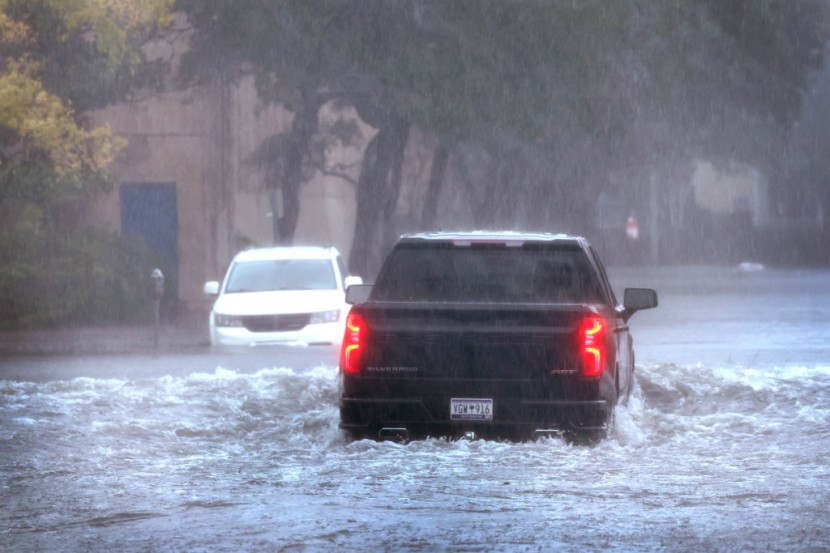
On Friday afternoon, Hurricane Ian made another landfall in South Carolina following a catastrophic march through the Florida peninsula that left thousands of people trapped along the state's Gulf Coast and destroyed thousands of homes.
At 2:05 p.m. the storm came crashing onshore. According to the US National Hurricane Center (NHC), a Category 1 hurricane with maximum sustained wind speeds of 85 mph (140 kph) was near Georgetown around 1805 GMT, a seaside community approximately 60 miles (97 km) north of the historic city of Charleston.
Gov, McMaster: Hurricane Ian is 'Very Dangerous'
The hurricane, one of the worst hurricanes ever to hit the US mainland, made landfall on Florida's Gulf Coast on Wednesday. It then tore through the state, turning beach communities into disaster zones due to devastating floods and winds.
At a morning briefing, Kevin Guthrie, the state's director of emergency management, stated that there had been reports of at least 21 deaths in Florida. He emphasized that some of the reports are still uncertain. According to the NHC, Hurricane Ian was projected to swiftly weaken as it moved inland over the Carolinas and then dissipate over western North Carolina or Virginia late on Saturday.
With a population of over 10,000, Georgetown is a popular tourist destination because of its streets lined with oak trees and more than 50 locations that are listed on the National Register of Historic Places. Hugo, a hurricane that hit in 1989, severely devastated the town.
Per Reuters, Gov. Henry McMaster described the hurricane as "very dangerous" before it made landfall in South Carolina on Friday afternoon, but he also assured reporters that "this is not as severe as it might have been."
Images of Hurricane Ian, which devastated southwest and central Florida as a Category 4 hurricane before weakening to a tropical storm, demonstrate the damage it wrought. On Thursday afternoon, it regained hurricane strength over the Atlantic, downgrading to a Category 1 storm. Here are some images on how Hurricane Ian affected South Carolina:
3 pm. The historical district of Georgetown is totally under water. Storm surge from #Hurricane #IAN in #SouthCarolina. pic.twitter.com/gBmyjMfiHp
— Josh Morgerman (@iCyclone) September 30, 2022
Wow! The end of the Pawleys Island Pier in South Carolina has collapsed and is floating away.
— Rob Way (@RobWayTV) September 30, 2022
The American flag is still flying as Hurricane Ian barrels onshore.
📸: Pawleys Island PD pic.twitter.com/rNJcmk61KM
Hurricane Ian made landfall in South Carolina as a Category 1 storm, bringing damaging winds and life-threatening storm surge. The storm is expected to move further inland across eastern South Carolina and central North Carolina.
— World News Tonight (@ABCWorldNews) September 30, 2022
LIVE UPDATES: https://t.co/qM3Bqst6Tv pic.twitter.com/dMlMbzBbTs
Flooding in downtown Charleston South Carolina happening right now due to Hurricane Ian. Many of the roads around the city are impassible, and more rain expected. I will continue covering the flood levels and showing the conditions. #hurricaneian #charleston #southcarolina #scwx pic.twitter.com/62LGGbTHYC
— Dan Whittaker (@severeforecast) September 30, 2022
FBI Arrests NSA Staff After Attempting To Sell US Secrets to Russian Foreign Service
Hurricane Ian's Next Path
A National Weather Service spokeswoman said on Friday afternoon that the storm was moving north at 15 mph (24 km/h) and had accelerated as it approached the shore. From the Savannah River outside of Savannah, Georgia, all the way up to Cape Fear, North Carolina, there was a hurricane warning in place.
For the Savannah River up to Cape Fear, the Neuse River in North Carolina, and the St. Johns River in Florida, a storm surge warning was issued. The NHC issued a warning that a 130-mile region between Isle of the Palms, north of Charleston, to Little River Inlet, north of Myrtle Beach, may see a peak storm surge of 4 to 7 feet at high tide.
The NHC predicts that Hurricane Ian will take a northwest turn tonight and travel inland across eastern South Carolina and central North Carolina through Saturday. After making landfall, the storm should quickly weaken and turn into a post-tropical cyclone before dissipating over western North Carolina or Virginia late on Saturday.
In response to the hurricane, President Joe Biden declared major disasters in Florida and South Carolina. According to tracker poweroutage.us, more than 300,000 people were without electricity on Friday in North Carolina and South Carolina.
The cities of Charlotte, Greensboro, and Virginia Beach saw torrential rain on Friday morning as a result of Ian. Georgia, the Carolinas, and Virginia were placed under a state of emergency, and coastal areas were warned.
Early this week, Hurricane Ian made landfall in western Cuba, prompting 50,000 residents of the province of Pinar del Rio to evacuate. The failure of the electricity grid caused a complete darkness on the island, Independent reported.
Related Article : WATCH: Hurricane Ian Continues Destroying US After Leaving Devastated Florida, Heads Toward South Carolina








